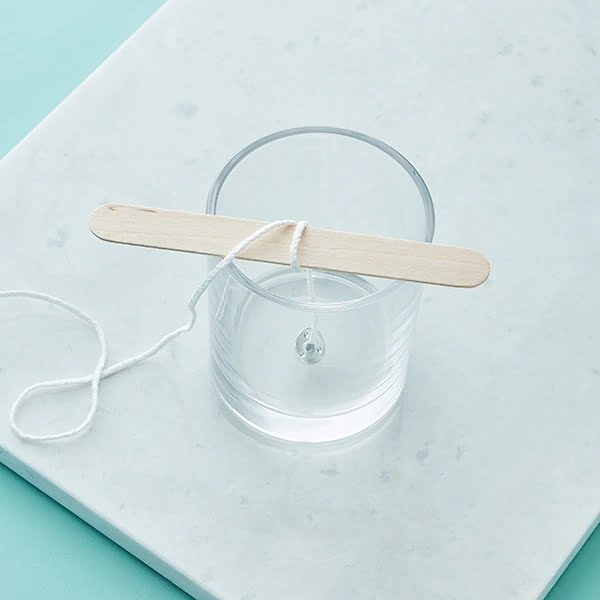Can you use plastic container when making a DIY candle? The trend of creating homemade candles has gained momentum in recent years, with many individuals enjoying the creative process and unique scents that come with crafting their own candles.
However, one crucial aspect of DIY candle making is the choice of materials used, particularly the type of container. Using the right container not only impacts the aesthetic appeal of the finished product but also plays a significant role in safety and environmental considerations.
When it comes to DIY candle making, the choice of container can greatly affect the overall experience and outcome. Plastic containers are a popular option due to their affordability and versatility. However, understanding the properties of plastic containers and their potential impact on homemade candles is essential for ensuring a successful and safe result.
In this article, we will delve into the advantages and disadvantages of using plastic containers for DIY candles while also addressing safety considerations and environmental impacts. Additionally, we will explore alternative container options such as glass, metal, and other materials that may be safer choices for homemade candles. It’s important to consider these factors when embarking on your DIY candle making journey to ensure a positive experience and successful outcome.
Understanding the Properties of Plastic Containers
When it comes to DIY candle making, the choice of container is an important decision that can impact the quality and safety of the final product. Plastic containers are a popular option for homemade candles due to their affordability and versatility. However, it is essential to understand the properties of plastic containers and weigh their advantages and disadvantages before using them for DIY candles.
One advantage of using plastic containers for DIY candles is their affordability and accessibility. Plastic containers are widely available and come in a variety of shapes and sizes, making them suitable for different types of candle creations. Additionally, plastic containers are lightweight and durable, making them easy to handle and transport.
Despite their convenience, there are several disadvantages to consider when using plastic containers for DIY candles. One major concern is the potential for plastic to melt or warp when exposed to high temperatures from burning candles. This can lead to safety hazards and compromise the integrity of the candle. Additionally, some plastics may contain harmful chemicals that can leach into the candle wax, posing health risks when the candle is burned.
| Advantages | Disadvantages |
|---|---|
| Affordable and accessible | Potential for melting or warping |
| Versatile in shapes and sizes | Possible presence of harmful chemicals |
| Lightweight and durable | Environmental impact |
Understanding these advantages and disadvantages can help DIY candle makers make informed decisions about whether or not to use plastic containers for their projects.
Safety Considerations
When it comes to DIY candle making, the type of container you use is crucial for both the quality of your candles and your overall safety. Many people wonder, “Can you use plastic containers when making a DIY candle?” While it is technically possible to use plastic containers for candle making, there are important safety considerations to keep in mind.
Plastic containers have both advantages and disadvantages when used for DIY candle making. On the one hand, they are lightweight, durable, and generally more affordable than other container options. However, plastic containers can also melt or deform when they come into contact with hot wax, posing potential hazards during the candle-making process.
One of the main safety concerns with using plastic containers for candles is the risk of fire or burns. When exposed to heat from the melted wax, certain types of plastic containers can release toxic fumes or even catch fire. Additionally, if the plastic container melts or deforms while the candle is burning, it can lead to spills and accidents. Therefore, it’s crucial to carefully consider whether a plastic container is suitable for your specific DIY candle-making project.
| Advantages of Plastic Containers | Disadvantages of Plastic Containers |
|---|---|
| Lightweight | Risk of melting or deforming when in contact with hot wax |
| Durable | Potential release of toxic fumes when exposed to heat |
| Affordable | Risk of catching fire |
Alternative Container Options
When it comes to making DIY candles, choosing the right container is crucial for the overall safety and effectiveness of the project. While plastic containers may seem convenient, it’s important to explore alternative options that are safer and more suitable for candle making. Glass, metal, and other materials offer a variety of benefits that can enhance the quality of homemade candles.
Advantages of Glass Containers
Glass containers are a popular choice for DIY candles due to their transparency, heat resistance, and aesthetic appeal. Unlike plastic, glass does not react with the candle wax or emit potentially harmful chemicals when exposed to heat. Additionally, glass containers are easy to clean and reusable, making them an environmentally friendly option for candle making.
Benefits of Metal Containers
Metal containers provide a durable and stylish alternative to plastic for DIY candles. They offer excellent heat conduction, which allows the candle to burn more evenly and efficiently. Metal containers can also withstand high temperatures without releasing toxins or affecting the scent of the candle. With various shapes and sizes available, metal containers can be a versatile choice for different candle-making projects.
Exploring Other Materials
In addition to glass and metal, there are alternative materials that can be used as safe containers for DIY candles. Ceramic vessels provide a unique and decorative option for homemade candles while offering heat resistance and stability. Terracotta pots are another natural material that can be repurposed as candle containers, adding a rustic touch to your creations. When considering alternative materials, it’s important to assess their heat tolerance and suitability for containing open flames.
By exploring these alternative container options, DIY candle makers can elevate their craft while prioritizing safety and sustainability. Whether opting for glass, metal, or other materials, selecting the right container is essential for creating high-quality homemade candles that are both safe and aesthetically pleasing.
Tips for Using Plastic Containers
When it comes to making DIY candles, the choice of container plays a crucial role in both the aesthetic appeal and safety of the finished product. While plastic containers are not the ideal option for candle making, there are certain instances where they can be used safely and effectively. In this section, we will explore some tips for using plastic containers when making DIY candles, as well as provide recommendations for ensuring a safe candle-making experience.
Considerations for Using Plastic Containers
It’s important to understand that not all types of plastic are suitable for candle making. Some plastics may melt or warp when they come into contact with hot wax, posing potential safety hazards.
Before using a plastic container for your DIY candles, make sure to check the recycling code on the bottom of the container. Look for containers with recycling codes #1 (PET) and #5 (PP), as these are more heat-resistant and can withstand the temperatures associated with candle making.
Preparing Plastic Containers for Candle Making
If you’ve decided to use a plastic container for your DIY candles, it’s essential to prepare the container properly before pouring the wax. One way to enhance the safety of using plastic containers is by double-wicking them.
Adding two wicks instead of one can help distribute heat more evenly, reducing the risk of melting or warping. Additionally, consider placing your plastic container on a heat-resistant surface or using a trivet to protect any underlying surfaces from potential heat damage.
Final Recommendations
While it is possible to use plastic containers for DIY candles under certain conditions, it is still advisable to explore alternative options such as glass or metal containers whenever possible. These materials are generally more heat-resistant and pose fewer safety risks during candle making.
However, if you choose to use plastic containers, be sure to follow these recommendations and exercise caution throughout the candle-making process. Ultimately, prioritizing safety and considering environmental impact should guide your decision when selecting a container for homemade candles.
How to Choose the Right Container
When selecting a container for homemade candles, it is important to consider various factors in order to ensure the success and safety of your DIY candle making project. Here are some key considerations to keep in mind when choosing the right container for your homemade candles:
- Size: The size of the container will determine the amount of wax and fragrance oils you can use, as well as the burn time of the candle. Consider the desired size and burn time of your candle before selecting a container.
- Material: The material of the container is crucial for safely containing hot wax and an open flame. While plastic containers can sometimes be used, glass and metal containers are generally recommended for their heat-resistant properties.
- Heat resistance: It is essential to choose a container that can withstand the heat of the burning candle without melting, warping, or releasing toxic fumes. Glass and metal containers are known for their heat resistance, making them safer options for DIY candles.
It is also important to consider the aesthetic appeal of the container, as well as any potential environmental impact. Additionally, if you plan to sell or gift your homemade candles, choosing a high-quality, visually appealing container can enhance the overall presentation and appeal of your product.
Ultimately, selecting the right container for your homemade candles is crucial for achieving both safety and aesthetic goals. By carefully considering factors such as size, material, heat resistance, and aesthetics, you can ensure that your DIY candle making project is not only successful but also safe for use.
Environmental Impact
When it comes to making DIY candles, the choice of container plays a significant role not only in the aesthetics of the finished product but also in its environmental impact. Many people wonder if using plastic containers for candle making is sustainable, considering the growing concern for environmental conservation. This section will address the sustainability aspect of using plastic containers and explore the implications of this choice.
Plastic containers have become a popular choice for DIY candle makers due to their affordability and availability in various shapes and sizes. However, plastic is a non-biodegradable material, which means that once discarded, it can take hundreds of years to decompose. This raises concerns about its long-term impact on the environment, especially when used for disposable items such as candle containers.
Additionally, the production of plastic containers contributes to pollution and greenhouse gas emissions. The extraction of raw materials, manufacturing process, and transportation all contribute to the carbon footprint associated with plastic products. As a result, choosing plastic containers for candle making may not align with sustainable practices, especially when there are alternative materials available that are more environmentally friendly.
Conclusion
In conclusion, when it comes to DIY candle making, the choice of container is an important factor to consider. While plastic containers can be used for making candles, it is crucial to understand their properties and potential hazards. The advantages of using plastic containers include their affordability, lightweight nature, and wide availability. However, there are also disadvantages such as their flammability and potential for releasing harmful chemicals when exposed to heat.
It is important for DIY candle makers to prioritize safety when choosing containers for their homemade candles. While plastic containers can be used, it is advisable to consider safer alternatives such as glass or metal. These materials are less likely to pose fire hazards and are more suitable for containing hot wax. In addition, considering the environmental impact of using plastic containers is also crucial in making a responsible choice.
Overall, while plastic containers can be used for DIY candle making, it is important to carefully consider the pros and cons before proceeding. Additionally, following safety considerations and understanding the environmental impact can help DIY candle makers make informed decisions when selecting the right container for their homemade candles.
Frequently Asked Questions
Can You Use a Plastic Jug for Candle Making?
Yes, a plastic jug can be used for candle making, but it’s important to choose the right type of plastic. Look for jugs made of heat-resistant and non-toxic plastics like high-density polyethylene (HDPE) or polypropylene. These types of plastics can withstand the heat of melted candle wax without releasing any harmful chemicals.
What Containers Are Safe for Candle Making?
When it comes to safe containers for candle making, it’s best to use materials like glass, metal, or specifically designed heat-resistant plastics. Glass jars are a popular choice because they are non-reactive and won’t leach any chemicals into the melted wax.
Metal containers made of aluminum or tin can also be used, but make sure they have a proper lining to prevent corrosion from the wax. Always avoid using containers made of flammable materials like paper or cardboard.
Can You Melt Candle Wax in a Plastic Container?
It is generally not recommended to melt candle wax in a plastic container because many types of plastic can melt or release toxic fumes when exposed to high temperatures. However, if you do need to use a plastic container for melting wax, make sure it is specifically designated as heat-resistant and safe for candle making.
Always check the plastic’s recycling code and choose ones labeled as #5 (polypropylene) or #2 (high-density polyethylene). However, using glass or metal containers is still considered the safest option for melting candle wax.

Welcome to my candle making blog! In this blog, I will be sharing my tips and tricks for making candles. I will also be sharing some of my favorite recipes.





